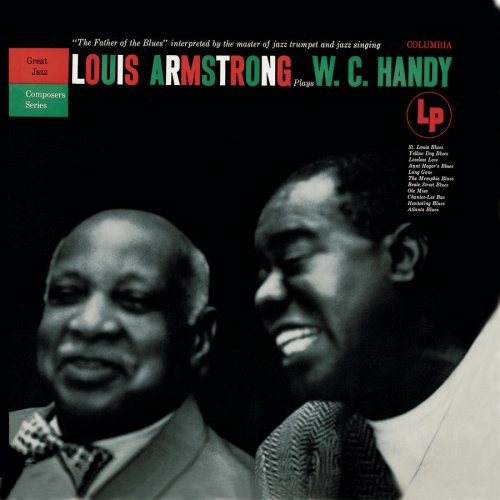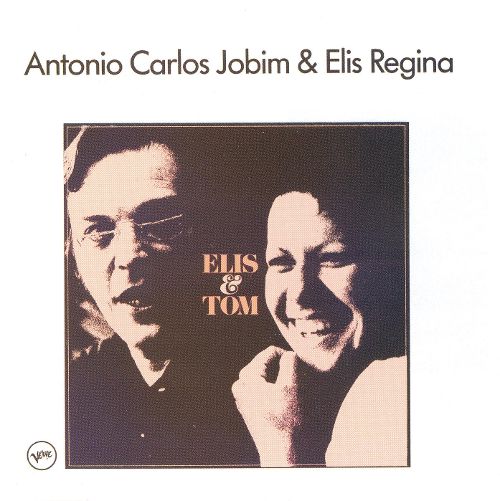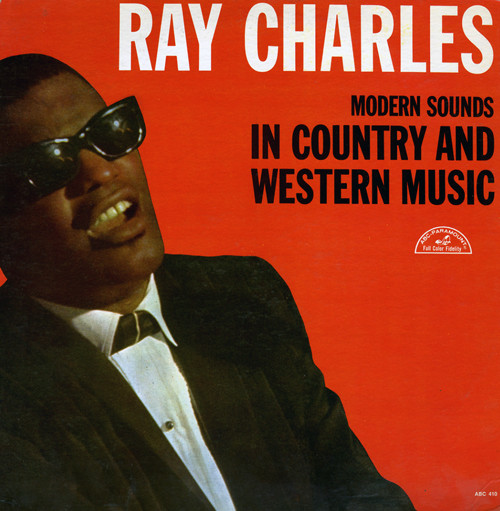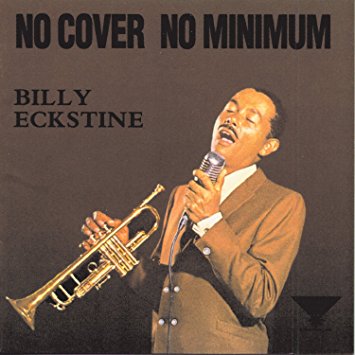Beyond the Book Review: A feast for the ears—60 Significant Vocal Jazz and Traditional Pop albums
I recently published a highly critical review of Will Friedwald’s The Great Jazz and Pop Vocal Albums (Pantheon 2017) on my December 2017 Book Review blog. The book highlights 57 albums representing his perspective on the best albums in the vocal jazz, traditional pop, and cabaret traditions. Lists are highly subjective by definition so personal taste will always engender criticism. While I agree with many of his choices, such as 1954’s Sarah Vaughan and Ray Charles’s 1962 album Modern Sounds in Country & Western Music, my primary critique with his list is a lack of diversity especially in terms of style and chronology. He fixates so narrowly on pop music of the mid-to-late 1950s (e.g., Doris Day) that he overlooks new generations of vocalists doing excellent work. Time will ultimately be the judge.
Below is a list of 60 albums in the vocal jazz, traditional pop, and cabaret fields that represent the best in the field of vocal interpretation. I selected the list based on the quality of the recording, unique and intangible qualities, and historic importance. Optimally, people who love enjoy these genres have fodder for discussion. Similarly, I hope that people seeking to build their collections and explore a variety of styles will find this list useful and informative. I aimed very intentionally to incorporate a balanced list of vocalists from multiple decades singing a broad repertoire of songs. I have restricted artists to one album apiece (except for duet projects) to foster greater diversity and have focused on albums rather than compilations. Because of this some key artists, such as Bessie Smith, are missing; check out my June 2016 blog “Contagious in his enthusiasms: A Personal List of Essential Music (Part 1)” to explore essential vocal jazz and pop compilations in greater depth.
Ballads, Crooning & Torch Songs
All the Way, 1992 (Jimmy Scott): After years of obscurity, the famed balladeer applied his languorous, almost elliptical style to classic ballads with the musicians and structural support befitting his talents.
American Song, 2003 (Andy Bey): A superb showcase of Bey’s hushed, carefully paced style
In the Wee Small hours of the Morning, 1955 (Frank Sinatra): This is one of ultimate torch song albums of Sinatra singing soulfully and vulnerably.
John Coltrane and Johnny Hartman, 1963 (Johnny Hartman): On a program of six songs, saxophonist John Coltrane and the sublime baritone Johnny Hartman create one of the most sumptuous collections of love songs.
Love, 1963 (Rosemary Clooney): Love captures the sensual energy and bittersweet nature of Clooney’s romance with arranger Nelson Riddle whose dramatic orchestrations amplify the emotional subtexts of these songs of romantic longing.
Mystery Lady: Songs of Billie Holiday, 1994 (Etta James): James switched from sultry R&B to the torch songs of Lady Day, her idol, and the result is a smoldering collection representing James at her most reflective.
Night in Manhattan, 1950 (Lee Wiley): Wiley’s cool sensuality illuminates a set of eight classic saloon songs.
Rapture, 1962 (Johnny Mathis): This suite of lushly arranged ballads captures the elegant crooning style of Johnny Mathis singing at his finest.
The Very Thought of You, 1958 (Nat King Cole): The lushest and most beautiful collection of ballads recorded by the smooth and poised Cole.
Blues & Jazz
Blue Light Til’ Dawn, 1993 (Cassandra Wilson): The most innovative vocal jazz album of the 1990s showcases profound awareness of how blues elements can transform how we hear and understand jazz.
Louis Plays W.C. Handy, 1964 (Louis Armstrong): Armstrong’s blues sensibility and improvisational prowess made him jazz’s most important musician. Here he interprets the repertoire of the premiere composer of early American blues.
Classic Blues
Richland Woman Blues, 2001 (Maria Muldaur): Muldaur interprets classic blues and country blues songs associated with Bessie Smith and Memphis Minnie, with gusto.
Brazilian Jazz & Pop
Courage, Milton Nascimento, 1969 (Milton Nascimento): Nascimento was an established musician in Brazil; his introduction to U.S. listeners is a collaboration with jazz musicians featuring many songs vocalists continue interpreting including bridges and Salt Song.
Elis & Tom, 1974 (Elis Regina and Antonio Carlos Jobim): Brazil’s finest singer and greatest composer collaborated on what are the definitive versions of songs such as “The Waters of March.”
Cabaret
Blame it On My Youth, 1992 (Holly Cole): Swinging postmodern cabaret bringing together a century of composers from Frank Loesser to Lyle Lovett.
From Broadway to Bebop, 1994 (Susannah McCorkle): McCorkle locates the melodic richness and lyrical imagination of everything from jazz standards like “Moody’s Mood” to movie themes on this wonderfully eclectic group of interpretations.
Judy Live at Carnegie Hall, 1961 (Judy Garland): Garland’s dynamic energy and vast repertoire came together on this magical night.
Midnight at Mabel Mercer’s, 1956 (Mabel Mercer): This exquisite set represents the sophisticated repertoire and some of live emotional intimacy that made the Welsh-American singer the exemplar of the cabaret vocal style.
Songs By Bobby Short, 1960 (Bobby Short): Short held court at the Café Carlyle for over 30 years and defined New York’s Upper Eastside cabaret sound. This early set showcases his mastery of the songs of Vernon Duke, Bessie Smith, Cole Porter and more obscure composers.
The Barbra Streisand Album, 1963 (Barbra Streisand): Streisand’s debut set a new standard in the vocal pop skill field via impeccable technical prowess and an original contemporary interpretive approach laced with irony, humor and vivacity that distinguished her from pre-rock female pop vocalists
The Divine Miss M, 1973 (Bette Midler): Midler reinvigorated cabaret music in the 1970s by mixing homages to pre-rock pop and rock material, with contemporary singer-songwriter fare.
Experimental/Beyond Category
Café Blue, 1994 (Patricia Barber): Thrilling experimental jazz featuring original compositions, interpretations of rock and standards, poetry, and instrumentals.
Genre-Busters
Modern Sounds in Country & Western Music, 1960 (Ray Charles): The pioneering soul man invigorated songs by Hank Williams and the Everly Brothers with brassy swing, and infused countrypolitan ballads with elegance and pathos.
Stardust, 1978 (Willie Nelson): Nelson translates his laidback phrasing and emotional command on this sterling collection of pre-rock standards arranged in an acoustic setting.
The Gathering, 2011 (Diane Schuur): Schuur, singing and playing piano, reinterprets a set of first-rate country classics in a soulful style showcasing her gospel, jazz and pop roots.
Singer-Songwriter Jazz
Be Good, 2012 (Gregory Porter): Porter solidified his reputation as the freshest male voice in 21st century vocal jazz thanks to his highly personal, yet relatable original songs, evoking writers like Oscar Brown Jr. and Marvin Gaye, and a warm, robust vocal style.
Serene Renegade, 2004 (René Marie): Marie consciously broke from the standards repertoire to craft this engaging suite of melodic new songs that tell fresh personal stories.
Soul & Jazz
Live Session, 1964 (Ernie Andrews and Cannonball Adderley): A jumping set of soulful and swinging performances by one of jazz’s most venerable and underrated vocalists in the presence of a sizzling band.
Pride and Joy, 2002 (Kevin Mahogany): Mahogany reinterprets classics from the Motown era as fresh jazz vehicles.
Tobacco Road, 1964 (Lou Rawls): Classic songs like “Ol Man River” and “Georgia on My Mind” take on a new life via the thoughtful interpretations of the soulful Lou Rawls.
Straight-ahead jazz & bebop
A Little Moonlight, 2003 (Dianne Reeves): Superb straight-ahead jazz that makes you hear key classics like “What a Little Moonlight Can do,” and “Lullaby of Broadway” in an entirely new way.
American Road, 2011 (Tierney Sutton Band): A stunning amalgamation of songs from spirituals to Broadway.
Anita O ’Day Sings the Winners, 1958 (Anita O’Day): A jazz vocalist in prime form interpreting classic jazz melodies.
Cat, 2006 (Catherine Russell): A contemporary synthesizer of R&B, swing, rock, and classic blues debuts here.
Close Enough for Love, 1989 (Shirley Horn): A masterful blend of luxuriant balladry and hard swinging jazz.
Count Basie Swings, Joe Williams Sings, 1955 (Joe Williams): A classic of big band swing jazz with a blued edge, including definitive versions of "Everyday I the Blues," "In the Evening When the Sun Goes Down," and "Alright, OK You Win" that have established a blueprint for other vocalists.
Dinah Jams, 1954 (Dinah Washington): Washington showcases the scope of her improvisational chops on this thrilling set recorded with bebop musicians before a live audience.
Ella in Rome: The Birthday Concert, 1958 (Ella Fitzgerald): Ella’s finest live album showcases her mastery of ballads, swing, improvisation and performance on an eclectic repertoire of top shelf songs.
Live at the Jazz Workshop, 1989 (Kitty Margolis): One of the most skilled improvisers steeped in the jazz tradition debuted on this thrilling concert album.
Love and Peace: A Tribute to Horace Silver, 1995 (Dee Dee Bridgewater): Bridgewater performs the first full collection of lyricized Horace Silver songs and it balances swing, bop, and funk perfectly.
Mel Tormé Swings Shubert Alley, 1960 (Mel Tormé): Tormé’s wit, poise, and musicianship infuses a set of bonafide Broadway classics with a jazz-based savoir-faire
Nancy King: Live at Jazz Standard (with Fred Hersch), 2006 (Nancy King): A masterful vocal improviser and astute pianist make improvisational magic together live.
Nancy Wilson/Cannonball Adderley 1961, (Nancy Wilson and Cannonball Adderley): Nancy Wilson essays a set of classic performances melding the earthiness of R&B with the fervor of jazz
Nightmoves, 2009 (Kurt Elling): Elling employs his formidable jazz chops on a varied program including a brilliant rendition of “Body and Soul” dedicated to his daughter.
No Cover, No Minimum, 1960 (Billy Eckstine): This live set chronicle’s baritone Eckstine’s powerful showmanship on everything from Broadway to Ellington.
Portrait of Sheila Jordan, 1962 (Sheila Jordan): A total original in the vocal world, Jordan translated the improvisational values of her bebop heroes, especially Charlie Parker, into daring approaches to jazz and pop standards.
Rah! 1961 (Mark Murphy): A student of bebop, swing, vocalese, and cool jazz, bopster Mark Murphy made his reputation on this inspired set, most notable for his take on “Doodlin,” “Twisted,” and “Milestones.”
Sarah Vaughan, 1954 (Sarah Vaughan): Vaughan’s gorgeous voice anchors this delightful small group set highlighted by classic ballad performances of “April in Paris” and “Embraceable You” and a highly influential version of Lullaby of Birdland.”
Songs I Like to Sing! 1960 (Helen Humes): The bluesy jazz singer with the girlish tone sings her favorite songs with some of her favorite musicians and the result is a highly natural and entertaining group of expert swinging performances.
Spring Isn’t Everything, 1986 (Maxine Sullivan): The swinging minimalist interprets songs of Harry Warren with interpretive grace and swinging aplomb.
Sweet Home Cookin’, 1993 (Karrin Allyson): Allyson’s sophomore album is a genuinely exciting collection of heartfelt ballads, soulful vocalese, and skillful improvisation.
The Audience with Betty Carter, 1979 (Betty Carter): This live set captures the skill and excitement of the improvisational daredevil Betty Carter.
The Dreamer in Me: Live at Dizzy’s Club, 2009 (Freddy Cole): An exciting concert set that captures the singer and pianist in total command of pop, swing, and blues tunes.
The Great American Songbook, 1972 (Carmen McRae): Subtle, swinging, and incisive, this concert capture McRae in peak form.
The Hottest New Group in Jazz, 1960 (Lambert, Hendricks & Ross): One of the most influential collections of the art of vocalese highlighted by classics such as “Twisted.”
The Real Thing, 1990 (Carol Sloane): An exemplary performance of swing, bop, and balladry by a seasoned interpreter.
Traditional Pop/Swing Influenced Pop
The Art of Romance, 2004 (Tony Bennett): An interpretive master reaches his musical and lyrical acme on an inspired set of love songs.
Ella Fitzgerald and Louis Armstrong: Porgy & Bess, 1958 (Ella Fitzgerald and Louis Armstrong): Jazz’s greatest duet partners combine forces on this exquisite interpretation of America’s premier folk opera.
Little Girl Blue, 1959 (Nina Simone): Simone’s unique blend of classical and jazz influences premiered on this stately album of inspired interpretations including “I Loves you Porgy” and “My Baby Just Cares for Me.”
Movin’ on Broadway, 1960 (Kay Starr): Starr brings brass, sizzle, and pathos to a delightful set of Broadway classics.
Each of these artists represents the best of these vocal traditions and warrant further listening and exploration. Enjoy!
COPYRIGHT © 2017 VINCENT L. STEPHENS. ALL RIGHTS RESERVED.































